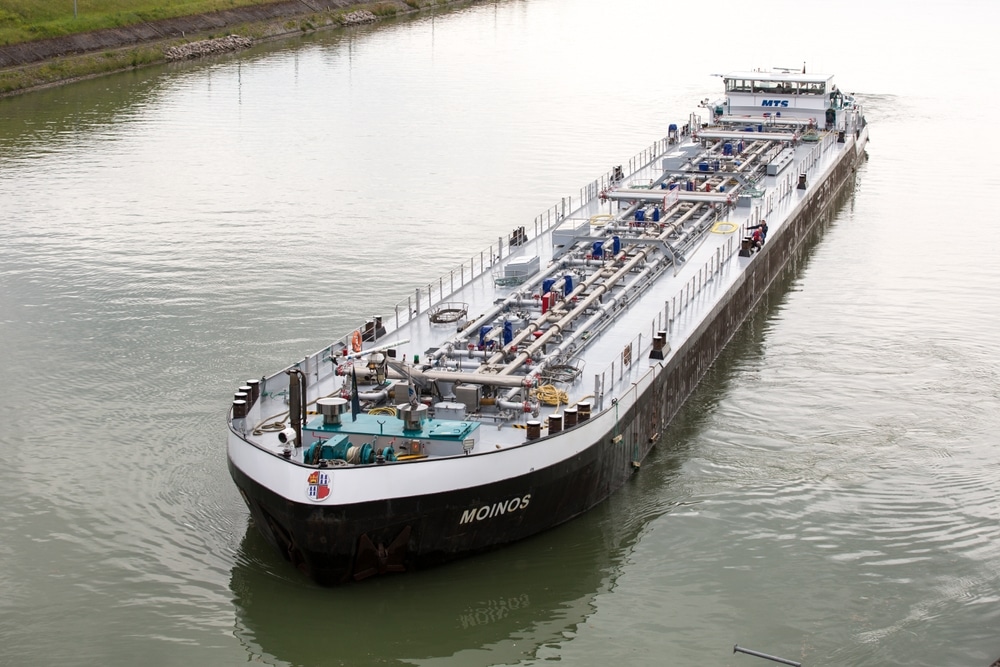As July neared its end, the Rhine barge freight market experienced a dramatic yet conflicting shift—with water levels rising sharply, but freight demand remaining muted. The combination of better load conditions and a lack of commercial momentum led to softer freight rates, particularly for longer-haul destinations.
1. Freight Rates: A Uniform Downward Correction
Across the week, freight rates moved predominantly downward, with the most significant drops seen toward the end of the period:
- On 29 July, Upper Rhine destinations such as Basel, Strasbourg, and Karlsruhe saw freight rates fall by over 10%, with Basel dropping more than 4 €/ton in a single day.
- The downward trend began early, with rates already softening on 22 and 24 July—notably for Basel, Strasbourg, and Karlsruhe.
- Some destinations saw minor recoveries midweek (e.g., Strasbourg on July 25), but these were brief and inconsistent.
Takeaway: The rate declines were driven not by logistics constraints, but by structural market softness.
2. Water Levels Surge, Boosting Intake Efficiency
Contrary to the usual seasonal trend, water levels across the Rhine rose substantially:
- Maxau surpassed 600 cm by July 29 (peaking at 650 cm), creating near-perfect intake conditions—reaching Marke I levels, which support maximum allowable loads.
- Earlier in the week, Maxau rose from ~427 cm on July 21 to over 571 cm by July 28, improving load intakes from around 1500 to 2500+ tons per barge.
- Kaub also climbed from 110 cm to over 174 cm, offering better conditions for Middle Rhine destinations.
Takeaway: Logistical efficiency improved significantly, reducing cost per ton—and thereby placing downward pressure on freight rates.
3. Demand Dynamics: Summer Lulls and Structural Weakness
Freight demand remained low and uneven, affected by several converging factors:
- Many freighters prioritized contractual and back-to-back deals, avoiding speculative volumes due to steep backwardation (notably a $-15/t ICE gasoil Aug/Sep spread).
- Consumption levels were low due to summer holidays, while most storage terminals were well stocked, reducing spot interest across the board.
- Some minor activity was reported midweek, but volumes were sparse and largely operational in nature.
Takeaway: A lack of economic incentives and seasonal demand suppression kept traders on the sidelines.
4. Spot Activity: Irregular and Transaction-Light
Throughout the week, the number of registered deals fluctuated, with no more than 8–12 offers on active days and as few as 4–5 on quieter days:
- The beginning of the week (21–23 July) saw more planning-related fixtures.
- By 29 July, only 5 deals were recorded, despite improved water levels.
- Market commentary repeatedly highlighted a focus on minimum viable shipping—only what was strictly necessary.
Takeaway: Participants are moving barges only to meet immediate obligations, not to capitalize on rate dynamics.
5. Market Outlook: Calm River, Quiet Market
Despite vastly improved logistics, there’s little to suggest a near-term change in sentiment:
- Barge availability is ample, delays are minimal, and water levels are supportive.
- But with pricing curves discouraging storage and inland demand plateauing, freight momentum is unlikely to return without a macro shift—either in product economics or export appetite.
Takeaway: The Rhine barge market has everything it needs to be busy—except the need itself.
Conclusion: Barges Can Float, But Demand Can’t Lift
The final days of July brought a tale of contrast. On one hand, the Rhine’s hydrological conditions turned ideal, with high water levels allowing operators to maximize intakes. On the other, market participation stayed minimal, freight rates declined, and traders stayed anchored to contract obligations. Until forward curves or consumption patterns shift, expect this stasis to continue.
What’s next?
Are you ready to face your challenges head-on?
We now offer a FREE customized trial to our BargeINSIGHTS tool, an all-in-one platform for liquid bulk barge transport optimization.
With BargeINSIGHTS, you get instant insights into barge freight rates, bunker gas oil prices, water levels, vessel tracking, and barge availability—all in one place. No more time-consuming data collection; everything you need is at your fingertips.
Click here to schedule your demo and get access to BargeINSIGHTS for free!

